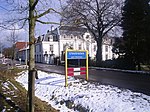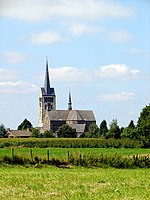Beek

Beek (Dutch: [ˈbeːk] ; Limburgish: Baek [ˈbɛːk]) is a town and municipality in the southeastern Netherlands, in the province of Limburg. As of 2012, Beek has a population of about 16,400, of which about 8,800 live in the town of Beek. The municipality of Beek makes part of the region of South Limburg and lies between the city of Geleen in the north and Maastricht in the south, and lies furthermore southeast of interchange Kerensheide and the chemical industries of Chemelot. It has a slightly hilly landscape with altitudes differing between 70 and 120 metres (230 and 390 ft) above sea level, and has two small forests: Kelmonderbos between Beek and Kelmond, and Spaubekerbos near Spaubeek. The Keutelbeek flows through and has its source in the municipality of Beek.
Excerpt from the Wikipedia article Beek (License: CC BY-SA 3.0, Authors, Images).Beek
Op de Windhaspel, Beek
Geographical coordinates (GPS) Address Nearby Places Show on map
Geographical coordinates (GPS)
| Latitude | Longitude |
|---|---|
| N 50.933333333333 ° | E 5.8 ° |
Address
Ôs Heukske
Op de Windhaspel
6191 LC Beek
Limburg, Netherlands
Open on Google Maps









